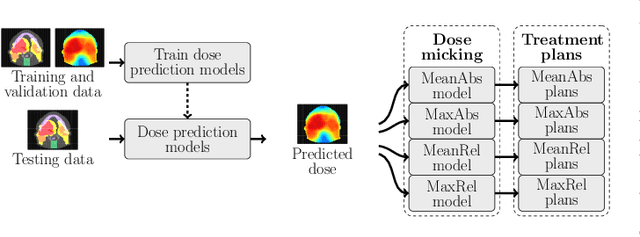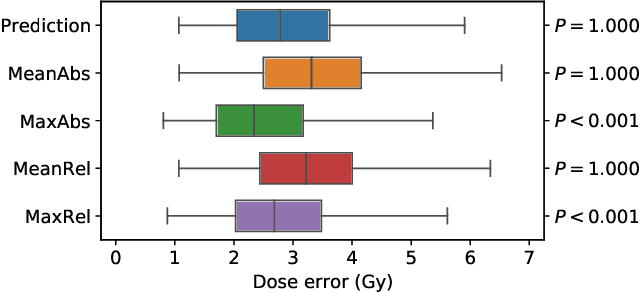Yuliang Huang
Resolving Variable Respiratory Motion From Unsorted 4D Computed Tomography
Jun 30, 2024Abstract:4D Computed Tomography (4DCT) is widely used for many clinical applications such as radiotherapy treatment planning, PET and ventilation imaging. However, common 4DCT methods reconstruct multiple breath cycles into a single, arbitrary breath cycle which can lead to various artefacts, impacting the downstream clinical applications. Surrogate driven motion models can estimate continuous variable motion across multiple cycles based on CT segments `unsorted' from 4DCT, but it requires respiration surrogate signals with strong correlation to the internal motion, which are not always available. The method proposed in this study eliminates such dependency by adapting the hyper-gradient method to the optimization of surrogate signals as hyper-parameters, while achieving better or comparable performance, as demonstrated on digital phantom simulations and real patient data. Our method produces a high-quality motion-compensated image together with estimates of the motion, including breath-to-breath variability, throughout the image acquisition. Our method has the potential to improve downstream clinical applications, and also enables retrospective analysis of open access 4DCT dataset where no respiration signals are stored. Code is avaibale at https://github.com/Yuliang-Huang/4DCT-irregular-motion.
OpenKBP-Opt: An international and reproducible evaluation of 76 knowledge-based planning pipelines
Feb 16, 2022



Abstract:We establish an open framework for developing plan optimization models for knowledge-based planning (KBP) in radiotherapy. Our framework includes reference plans for 100 patients with head-and-neck cancer and high-quality dose predictions from 19 KBP models that were developed by different research groups during the OpenKBP Grand Challenge. The dose predictions were input to four optimization models to form 76 unique KBP pipelines that generated 7600 plans. The predictions and plans were compared to the reference plans via: dose score, which is the average mean absolute voxel-by-voxel difference in dose a model achieved; the deviation in dose-volume histogram (DVH) criterion; and the frequency of clinical planning criteria satisfaction. We also performed a theoretical investigation to justify our dose mimicking models. The range in rank order correlation of the dose score between predictions and their KBP pipelines was 0.50 to 0.62, which indicates that the quality of the predictions is generally positively correlated with the quality of the plans. Additionally, compared to the input predictions, the KBP-generated plans performed significantly better (P<0.05; one-sided Wilcoxon test) on 18 of 23 DVH criteria. Similarly, each optimization model generated plans that satisfied a higher percentage of criteria than the reference plans. Lastly, our theoretical investigation demonstrated that the dose mimicking models generated plans that are also optimal for a conventional planning model. This was the largest international effort to date for evaluating the combination of KBP prediction and optimization models. In the interest of reproducibility, our data and code is freely available at https://github.com/ababier/open-kbp-opt.
 Add to Chrome
Add to Chrome Add to Firefox
Add to Firefox Add to Edge
Add to Edge